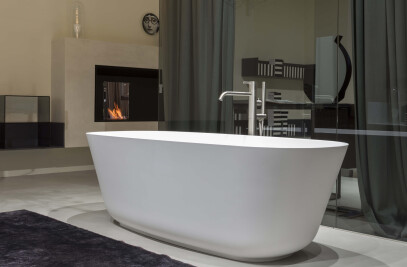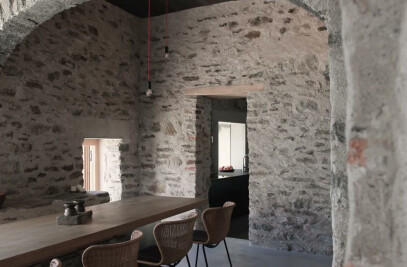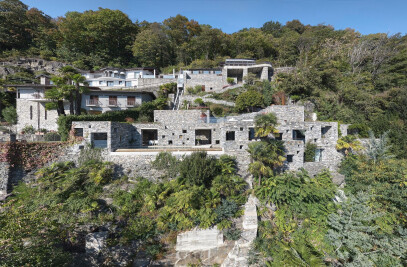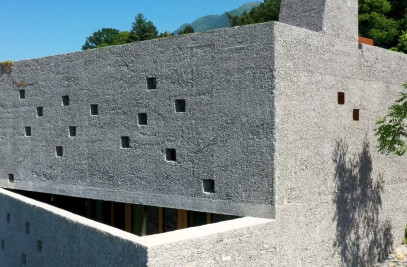Original situation
The rural property lies in a hilly landscape about 12 km from the town of Treia.
The ca. 300 years old farmhouse has three storeys, and half of the main building was damaged by fire in 1995.
The outer facade of the main building is put under protection by the municipal authority.
The complex was completed by two smaller volumes of one level only: the first was a herd and a furnace, the other one was a cantilever roof barn.
Intervention
Intention of the project was the renovation and transformation of the property into a contemporary dwelling and holiday house, with attached guest house and pool.
The masonry has been largely preserved and restored, whereas all the wood structure (intermediate floors and roof) where replaced.
As part of the renewal of the static structure, the necessary reinforcing precautions for seismic safety, were integrated in an invisible manner.
The architectural language the matizes the combination of old substance and new interventions: sometimes by contrast and sometimes by merging both old and new.
For example, the roof was restored in the traditional way (primary and secondary wooden beams, sub view with terracotta, roof covering with "coppi" tiles), while the new intermediate floors and new interior walls are in white plaster. The floors also are made without joints in a hard and clear material.
These new white interior surfaces help the reflection of light, giving them the feeling of largeness. In this way it was possible to maintain the relatively small historical apertures in the same dimensions and proportion, whilst all rooms are irradiated by a fresh light.
The original stone wall which divides clearly into two parts the plan of the main building has been respected and largely preserved by the intervention.
The northern portion of the house was a ruin after the fire, this ruin has inspired the project.
In fact an open ad airy room that goes from the ground floor to roof has been realized.
This room includes the kitchen with dining room and three white volumes are inscribed in it, containing the entrance gallery, the staircase and a studio.
The southern part of the house is vertically divided in the classic way. On the ground floor we find the living room with a fireplace, while the two upper floors are a total of four bedrooms, each with their own bathroom.
The contemporary stainless steel kitchen has a free position in the room and is in contrast compared to the warm atmosphere created by the historic walls that surround it.
The old barn on the east side of the main house was demolished and rebuilt in the same position and with the use of old terracotta tiles, creating the guest house.
The south roof has been replaced by an open loggia with outdoor kitchen, in the same dimensions of the existing roof.
The pool was placed in a clear geometric reference between the main house, the guest house and the loggia. The pool with its plastic appearance reminds to a large fountain.
The existing accessory building on the north side was used as the heating plant and boiler room. The automatic gate plugs in the same volume. This architectural approach defines and emphasizes the new entrance to the estate. The complex was delimited by a row of pine trees on the west side and an olive grove on the east, and integrates itself with new life in the hills of the Marches.



































